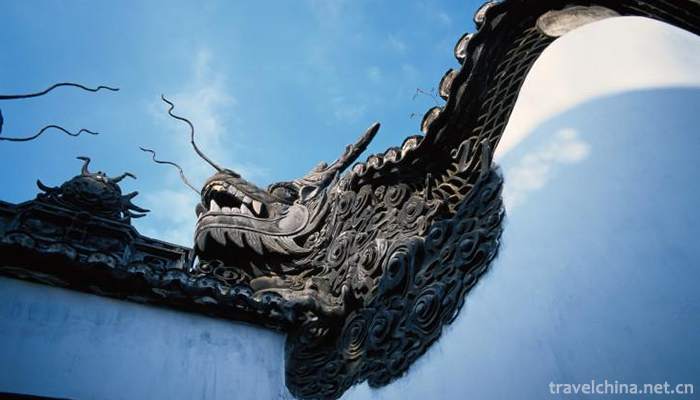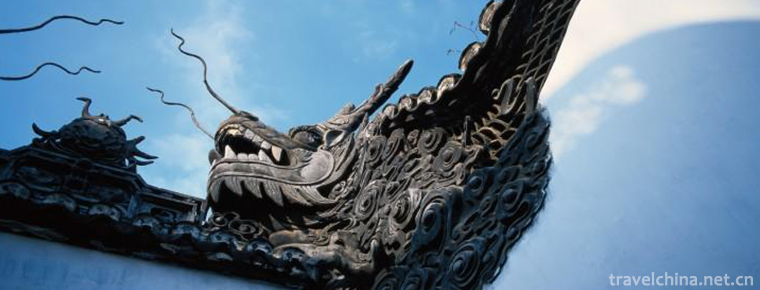Restoration Techniques of Ancient Architecture
Restoration Techniques of Ancient Architecture
Ancient buildings are an important part of historical relics in China. Protecting, restoring and renovating ancient buildings is one of the important tasks in the protection of cultural relics. It is also one of the problems that need to be further studied in architectural design, urban planning and landscape design.
Principles of Restoration and Reconstruction of Ancient Buildings
Like all other historical relics, the value of ancient architecture lies in that it is a legacy of history. It can not be reproduced and rebuilt, and once destroyed, it can not be retrieved. Therefore, the basic principles of cultural relics protection must be followed in the restoration work.
Firstly, the repairing and filling parts should form a whole with the original parts, maintain overall harmony and consistency, and help to restore rather than reduce its artistic and information value.
Secondly, any additional part must be different from the original part, so that people can distinguish what is the restoration of contemporary things and what is the past, in order to maintain the historical continuity of cultural relics and the authenticity of historical and artistic witnesses.
Thirdly, the things formed in different historical periods (including building types, building materials, structural modes, etc.) reflect the traces left in the process of historical development. They have their historical characteristics. When they are repaired, they must preserve the status quo or restore the status quo.
Types of Restoration and Reconstruction of Ancient Buildings
Rehabilitation and protection of ancient buildings take different ways because of different historical values, historical status, building quality, damaged degree and cultural and historical environment of the protected buildings. The ways of repair and improvement are generally divided into three categories.
The first is the most common practice: to restore the original style of the protected buildings as much as possible, or even make them refreshed. This practice is generally used in temples and the former residences of celebrities, etc. The original uses have not been changed or used as visits.
The second is the contrast between the old and the new: emphasizing the traces of the times, so that the repaired parts can be significantly different from the original parts, which is ubiquitous in ancient European buildings, but seldom used in China.
The third type is to use modern space art language to dialogue with existing historical buildings, which has been more and more widely accepted, especially in the process of expansion and reconstruction of ancient buildings, the most successful is the Louvre expansion project.
Material and Technology for Restoration and Reconstruction of Ancient Buildings
To restore ancient buildings, the original materials and techniques should be used, which is the fundamental guarantee for carrying out the principle of restoring cultural relics and doing a good job in restoring them. However, in the current restoration of cultural relics and ancient buildings, there are problems in materials and technology.
Nowadays, the biggest problem in the restoration of ancient buildings is the lack of wood, especially the lack of dry wood, and the lack of large volume of dry wood. China itself is short of forest resources, and the demand for timber in the construction market is very large. It can only be used now, and the moisture content of timber is high. Restoration of ancient buildings is limited by time and funds, and timber can not be bought in advance for natural drying. It is not only difficult to ensure the quality of wet wood used in ancient building restoration, but also very perishable, which is a big problem.
Secondly, bricks and tiles. Bricks and tiles are manufactured building materials. The traditional brick and tile firing process is very strict and exquisite. Nowadays, even if we know this series of traditional processes, no factory will do it according to this process. Because that will increase the cost, the product can not be sold, resulting in the closure of the factory. So the quality of bricks and tiles produced now is much worse than before.
Thirdly, from the technical point of view, since the 1980s, great progress has been made in inheriting and disseminating the traditional technology of ancient buildings, but this does not mean that the quality of the restoration of ancient buildings and cultural relics has been improved. At present, the quality of our ancient construction restoration team is not high and the level is low. The existence of material and technical problems is not only the cause of itself, but also the root of these problems must be found out in order to solve them fundamentally.


-
1.Soup with pepper
Soup with pepper, a well-known snack in Central Plains, originated in Xiaoyao Town, Xihua County, Zhoukou City, Henan Province, and Beiwudu Town, Wuyang County, Luohe City. Especially known as Xiaoyao
Time 2018-11-10 -
2.The Yellow Dragon Cave huanglong Cave
Located in Wulingyuan Scenic Area, the core scenic spot of Zhangjiajie City, Hunan Province, Huanglong Cave is an integral part of the World Natural Heritage Site and Zhangjiajie World Geopark
Time 2019-01-18 -
3.Quancheng Marine Polar World
Quancheng Marine Polar World is a comprehensive exhibition hall located in Qihe County, Dezhou City, Shandong Province, with a total investment of 1 billion yuan
Time 2019-02-07 -
4.Kazakh Tiermai
Tiermai, which means "short poem" in Kazakh language, usually implies philosophy in the poem in a narrative way to give people inspiration. This kind of poem is widely spread among Kazakh he
Time 2019-05-02 -
5.Han tune
The mast of Hanzhong Diaoqu, a local traditional drama in Hanzhong City, Shaanxi Province, is one of the national intangible cultural heritages.
Time 2019-05-02 -
6.a kind of local opera popular in Shandong Province
Liuqiang, a local traditional drama in Jimo City, Shandong Province, is one of the national intangible cultural heritage.
Time 2019-05-14 -
7.Miao Lusheng Production Techniques
Miao Lusheng production process is complex, generally using scraping, cutting, through, hammering, clamping, drilling and other related tools, through the selection of materials, baking materials, mak
Time 2019-06-05 -
8.Elbow pounding
This is a rather mysterious school, which originated from a famous family in Linqing, and is closely related to the chivalrous spirit inherent in the Chinese people; it is a fierce school, but it has
Time 2019-08-10 -
9.Gong Shuban Lu Ban
Luban (507 BC - 444 BC), Lu people in the spring and Autumn period. Ji surname , a two-character surname Name, class, person. Public transport plate , Public like , Class lose It is also known as &quo
Time 2019-09-07 -
10.Chongzhou jiulonggou scenic spot
Chongzhou jiulonggou scenic spot is located in Sanlang Town, Chongzhou City, with an area of more than 170 square kilometers and 76 kilometers away from Chengdu City. Jiulonggou is known as "Dragon Palace on earth".
Time 2020-11-05 -
11.Land resources in Suining
The total cultivated land area of Suining is 2.2815 million mu, of which the purple soil area is the largest, accounting for 62% of the cultivated land area, which is widely distributed in the low mountain and hilly areas.
Time 2020-12-16 -
12.Guangan secondary industry
In 2019, the industrial added value of Guang'an City will reach 28.87 billion yuan, an increase of 8.8%, and its contribution rate to economic growth will be 34.9%. At the end of the year, there were 597 Industrial Enterprises above Designated Size, and
Time 2020-12-19